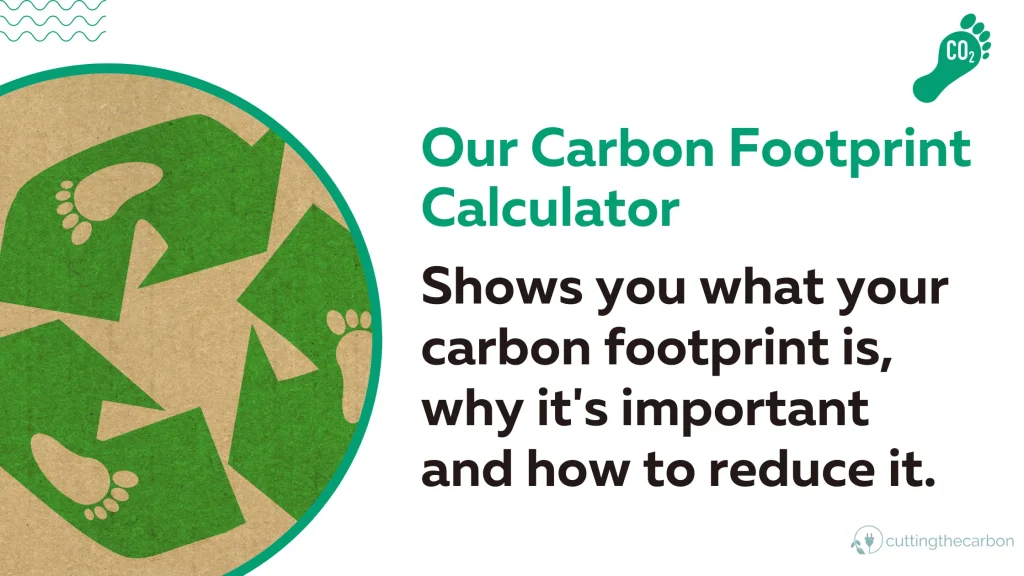
Are you aware of your carbon footprint and its impact on the environment? Discover how carbon footprint calculators can empower you to make a difference in the fight against climate change.
Learn about the various calculators available, including our carbon footprint calculator UK, the different types of greenhouse gas emissions, and the strategies to reduce your carbon footprint.
Short Summary
- Exploring Carbon Footprint Calculators in the UK provides information on how to measure and reduce greenhouse gas emissions.
- Personal, business, and transport calculators enable individuals and companies to assess their CO2 emissions.
- Understanding sources of carbon dioxide and renewable energy solutions, energy efficiency measures, sustainable travel options & responsible offsetting practices can help reduce one’s carbon footprint.
Here Is The Carbon Footprint Calculator. Please Feel Free To Try It Out
Here is a table summarising the average energy consumption and costs for homes in the UK:
| House Size | Average Annual Consumption (Gas) | Average Annual Consumption (Electricity) | Average Annual Cost (Gas and Electricity) |
|---|---|---|---|
| 🏠Flat or 1-bedroom house (1-2 people) | 8,000 kWh | 1,800 kWh | £1,723.76 |
| 🏠3-bedroom house (2-3 people) | 12,000 kWh | 2,900 kWh | £2,502.26 |
| 🏠5-bedroom house (4-5 people) | 17,000 kWh | 4,300 kWh | £3,483.70 |
💡Please note that these figures are averages, and actual consumption and costs can vary based on lifestyle, insulation, and appliance efficiency.
How To Manually Calculate Your Carbon Footprint (For All You Mathematicians Outhere)
To calculate your carbon footprint, follow these steps:
⚡ Take your monthly electricity bill and multiply it by 105.
🔥 Your monthly gas bill should also be multiplied by 105.
🛢️ Your monthly oil bill needs to be multiplied by 113.
🚗 The total distance you’ve driven in a year should be multiplied by 0.79.
✈️ For every flight you’ve taken in the past year that lasted 4 hours or less, multiply by 4,400.
📰 If you don’t recycle newspapers, add 184 to your total.
🥫 If you don’t recycle aluminium and tin, add 166 to your total.
After you’ve done all of this, add the results from steps 1-7 together. This will give you your total carbon footprint.
A carbon footprint considered “low” or “ideal” falls between 6,000 and 15,999 pounds per year. An “average” carbon footprint is between 16,000 and 22,000 pounds per year. If your carbon footprint is less than 6,000 pounds annually, it’s considered to be very low.
Exploring Carbon Footprint Calculators in the UK
Carbon footprint calculators have emerged as powerful tools for individuals and businesses to measure their greenhouse gas emissions, enabling them to identify potential areas for improvement and positively impact the environment.
In the UK, various types of carbon footprint calculators cater to different needs, including personal, business, and transport-focused options.
By understanding the different calculators available and their applications, we can make informed decisions on reducing our carbon footprint and contributing to a more sustainable future.
These calculators often provide results in an Excel spreadsheet format for easy analysis and comparison, helping individuals and businesses visualise the components of their lifestyle or operations that result in the most significant carbon emissions.
One common question these calculators can help answer is how much electricity contributes to their overall footprint. With the average ecological footprint in the UK being in excess of 5 global hectares per person, there is a pressing need to become a ‘one planet’ person and nation.
Read on to explore the different types of carbon footprint calculators in the UK and how they can help you on your journey towards a greener lifestyle.
Your Carbon Footprint Explained Video In Simple Terms
Personal Carbon Footprint Calculators
Personal carbon footprint calculators assist individuals in calculating their carbon emissions based on their lifestyle choices, such as home energy use, transportation, and waste.
By providing an initial estimation of the CO2 emissions an individual produces in one year, these calculators allow people to comprehend their own emissions and pinpoint areas where they can mitigate their impact on the environment.
In addition to the personal carbon footprint calculators, there are other tools like the Impact Community Carbon Calculator, which evaluates the carbon footprint of one’s local community at various levels of local government, such as parish, town, or district.
These calculators can inspire collective action and empower communities to make more sustainable choices that benefit the environment.
Business Carbon Footprint Calculators
Business carbon footprint calculators are crucial in helping UK businesses track and reduce their emissions to achieve net zero. By completing a free net-zero survey and entering data from their energy bill, businesses can use these calculators to automatically generate carbon footprint calculations and identify areas for reduction.
Additional resources, such as video guides and FAQs, can provide businesses with more information on utilising carbon footprint calculators effectively.
Moreover, these calculators can assist businesses in reporting their carbon emissions, informing customers of their efforts to reduce their carbon footprint. This transparency can increase trust and loyalty from customers who value sustainability.
Transport-focused Carbon Footprint Calculators
Transport-focused carbon footprint calculators specifically target emissions from transportation and travel, considering factors such as vehicle type, distance travelled, and fuel efficiency.
These specialised calculators play a vital role in addressing one of the most significant sources of carbon emissions and help individuals and businesses make more sustainable travel choices.
EcoPassenger is a transport-focused carbon footprint calculator. It compares energy consumption, carbon emissions, and other environmental impacts when travelling by plane, car, or train.
Other available calculators include The Carbon Footprint Calculator For Business and the Carbon Footprint Calculator For Schools, catering to different needs and encouraging a broader audience to take responsibility for their transportation-related emissions.
How Greenhouse Gas Emissions Are Caused Diagram
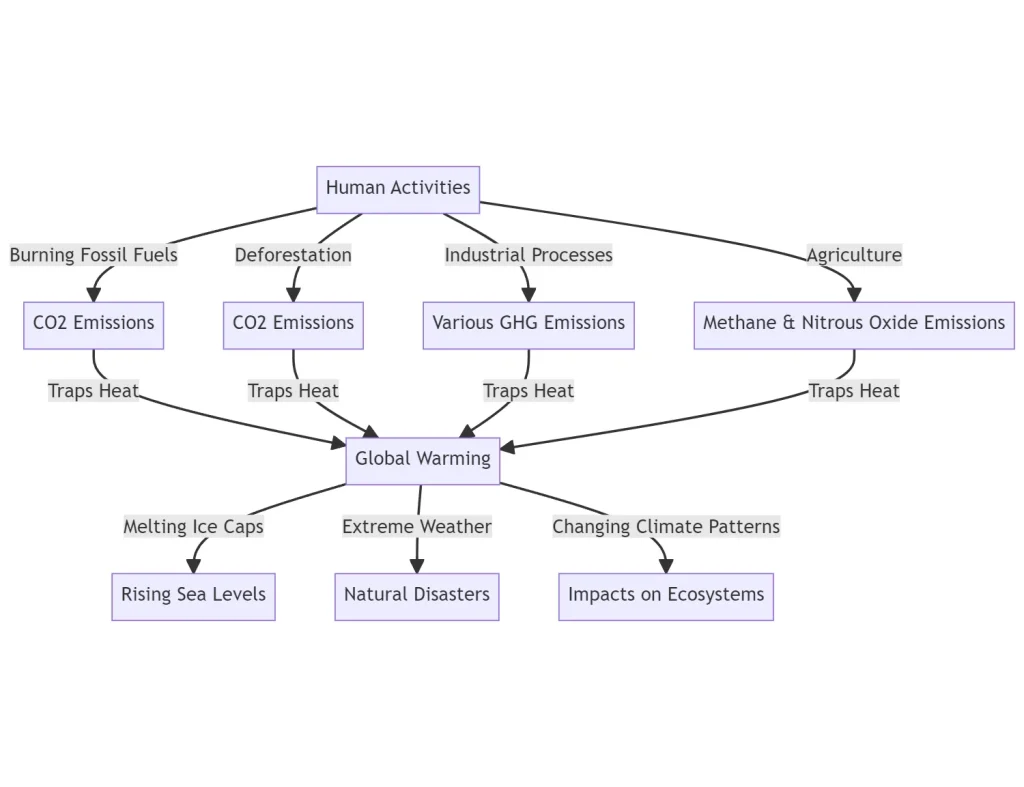
What Are The Top Countries With The Highest Carbon Footprint?
This table lists the top 10 countries with the highest carbon footprint, measured in millions of tons of CO2 emissions in 2019.
| Country | CO2 Emissions (Million Tons, 2019) |
|---|---|
| China | 10,065 |
| United States | 5,416 |
| India | 2,654 |
| Russia | 1,711 |
| Japan | 1,162 |
| Germany | 759 |
| Iran | 720 |
| South Korea | 659 |
| Saudi Arabia | 621 |
| Indonesia | 615 |
Understanding Greenhouse Gas Emissions
Greenhouse gases, such as carbon dioxide (CO2), methane (CH4), nitrous oxide (N2O), and fluorinated gases, are present in the Earth’s atmosphere and contribute to the greenhouse effect by trapping heat.
The resulting increase in global temperatures has far-reaching consequences, causing alterations to weather patterns, sea levels, and ecosystems. Understanding the different types of greenhouse gas emissions, their sources, and their impact on the environment is crucial for effectively addressing the climate crisis.
In addition to carbon dioxide, other greenhouse gases like methane and nitrous oxide play a significant role in climate change. By understanding the variety of greenhouse gas emissions and their sources, we can implement targeted strategies to reduce our carbon footprint and mitigate the effects of climate change.
Carbon Dioxide and its Sources
Carbon dioxide is the primary greenhouse gas, with sources including fossil fuel combustion, deforestation, and industrial processes. As a significant factor in climate change, carbon dioxide retains heat in the atmosphere, contributing to global warming. Understanding the carbon dioxide equivalent of various activities can help reduce its environmental impact.
We can utilise renewable energy sources to decrease carbon dioxide emissions, enhance energy efficiency, and opt for sustainable travel options. By understanding the sources of carbon dioxide and taking action to reduce our emissions, we can play a crucial role in addressing the climate crisis.
Other Greenhouse Gases
Other greenhouse gases, such as methane and nitrous oxide, also contribute to climate change. These gases are emitted from various sources, including agricultural activities, landfills, and industrial processes—the consequences of these gases on the environment range from global warming to ozone depletion and acid rain.
Recognising the impact of other greenhouse gases, in addition to carbon dioxide, is essential for devising comprehensive strategies to combat climate change. By targeting these diverse sources of emissions, we can develop a more holistic approach to mitigating the effects of climate change on our planet.
UK Greenhouse Gas Emissions, 1990-2022 Chart
The statistics represent emissions in units equivalent to carbon dioxide (CO2e).
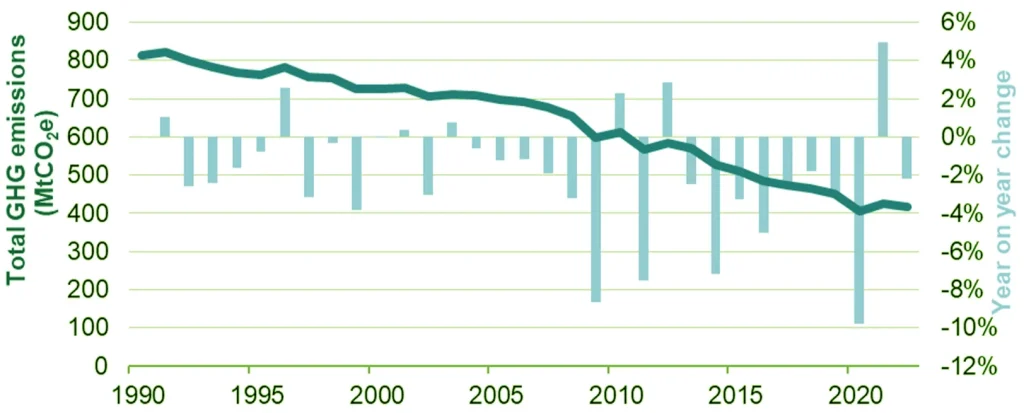
Direct and Indirect Emissions
Direct emissions originate from sources owned or managed by an entity, such as burning fossil fuels or manufacturing processes. On the other hand, indirect emissions result from activities related to the entity but not directly controlled by it, such as purchased electricity or goods and services.
Calculating direct and indirect emissions using a carbon footprint calculator enables individuals and businesses to understand the sources of their emissions and the volume of emissions produced.
By understanding the distinction between direct and indirect emissions, we can implement targeted strategies to reduce our overall carbon footprint.
Territorial Carbon Dioxide Emissions From UK Power Stations, UK, 1990-2022 (MtCO2) Chart
When adjusted for temperature, the general pattern in energy supply emissions mirrors the unadjusted pattern, primarily because most of the electricity produced is utilized for functions other than heating.
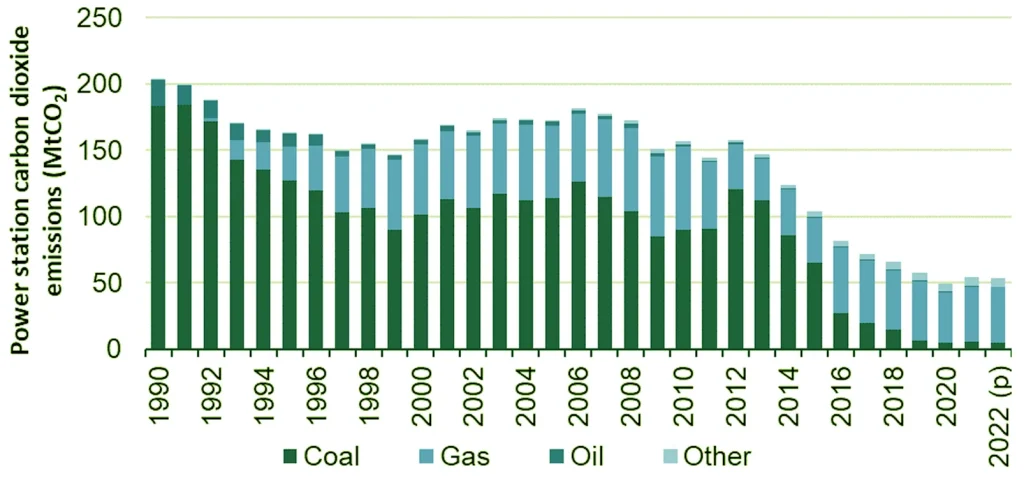
Reducing Your Carbon Footprint
To effectively combat climate change, we must reduce our carbon footprint by implementing strategies such as renewable energy solutions, energy efficiency measures, and sustainable travel options.
By incorporating these strategies into our daily lives, we can significantly reduce greenhouse gas emissions and contribute to a more sustainable world.
The following sections will explore these strategies, benefits, and practical applications. By understanding the various ways to reduce our carbon footprint, we can make informed decisions and take meaningful steps towards a greener lifestyle.
Here is a table summarising some helpful ways to reduce your carbon emissions:
| Tip | Description |
|---|---|
| Use Heating Controls | Consider switching to a renewable heating system such as an air source or ground source heat pump, which is more efficient than gas boilers. |
| Upgrade Your Heating System | Consider switching to a renewable heating system such as an air source or ground source heat pump, which are more efficient than gas boilers. |
| Insulate Your Home | Prevent heat loss through gaps around windows, doors, and floorboards or up your chimney. |
| Draught-proofing | Opt for locally grown, in-season food and reduce your meat and dairy consumption. Also, try to minimize food waste. |
| Use Low Energy Lighting | Replace all the bulbs in your home with LED lights, which use 80-90% less energy than traditional lightbulbs. |
| Choose Energy Efficient Appliances | Opt for appliances with high energy efficiency ratings and make small changes to your habits, such as using Eco modes and lower temperatures. |
| Opt for Low Carbon Travel | Consider walking, cycling, or switching to an electric car for short distances. |
| Reduce, Reuse, Recycle | Minimize consumption, reuse where possible, and recycle when you no longer need something. |
| Consider Your Food Choices | Opt for locally grown, in-season food and reduce your meat and dairy consumption. Also, try to minimise food waste. |
Renewable Energy Solutions
Renewable energy solutions, such as solar panels and wind turbines, offer clean and sustainable alternatives to traditional energy sources like fossil fuels. These solutions not only help to reduce carbon emissions but also provide a more reliable source of energy.
Despite the potential challenges associated with renewable energy solutions, such as installation and maintenance costs or limited accessibility in certain areas, their long-term benefits for the environment and climate crisis far outweigh these drawbacks.
Energy Efficiency Measures
Energy efficiency measures aim to reduce energy consumption and waste by upgrading insulation, utilising energy-efficient appliances, and implementing renewable energy sources. These measures not only help to reduce carbon emissions but can also result in significant savings on energy bills.
Sustainable Travel Options
Sustainable travel options, such as public transportation, cycling, and electric vehicles, offer eco-friendly alternatives to traditional modes of car travel that contribute to greenhouse gas emissions. Furthermore, cycling offers a low-emission travel option promoting physical activity and well-being.
Using public transportation can decrease emissions by reducing the number of cars on the road. While electric vehicles can significantly reduce emissions compared to gasoline-powered vehicles, thus lowering gas consumption.
The Role of Carbon Offsetting
Carbon offsetting serves as an interim solution to the climate crisis by compensating for emissions that cannot be avoided. While carbon offset is not a universal solution, it can be a powerful tool for mitigating emissions in the short term and supporting environmental projects. However, it’s essential to be aware of the potential drawbacks and exercise caution when choosing offsetting schemes.
In the following sections, we will explore the concept of carbon offsets, the pros and cons of carbon offsetting, and responsible practices for carbon offsetting.
By understanding the role of carbon offset in mitigating climate change, we can make informed decisions about effectively using this tool in our efforts to protect the environment.

What are Carbon Offsets?
Carbon offsets are tradable certificates that represent a reduction in greenhouse gas emissions. By purchasing these certificates, individuals or companies can fund projects that combat climate change instead of taking actions to reduce their own carbon emissions.
While carbon offsets can provide advantages, such as supporting environmental projects that would otherwise lack funding, they also have potential drawbacks, including the risk of deception and a lack of long-term emissions reduction.
Therefore, it’s essential to carefully consider the use of carbon offsets and prioritise responsible practices.
Pros and Cons of Carbon Offsetting
Carbon offset offers potential advantages, including support for environmental projects and the ability for businesses to reduce their carbon footprint. However, it should not be considered a universal solution and should be used cautiously. Carbon offset may also lead to increased costs for consumers.
Despite these drawbacks, carbon offsetting can be a powerful tool in the fight against climate change when used responsibly.
Responsible Carbon Offsetting Practices
Responsible carbon offsetting practices involve compensating for emissions that cannot be mitigated through other means by investing in projects that either reduce CO2 emissions or store CO2.
These projects should be transparent, verifiable, and have a long-term impact on reducing emissions. Examples of responsible offset projects include reforestation, constructing renewable energy sources, cultivating carbon-storing agricultural practices, and managing waste and landfill.
By prioritising emission reduction at the source and supporting credible, transparent offset projects, we can ensure that our carbon offset efforts benefit the environment and contribute to the fight against climate change.
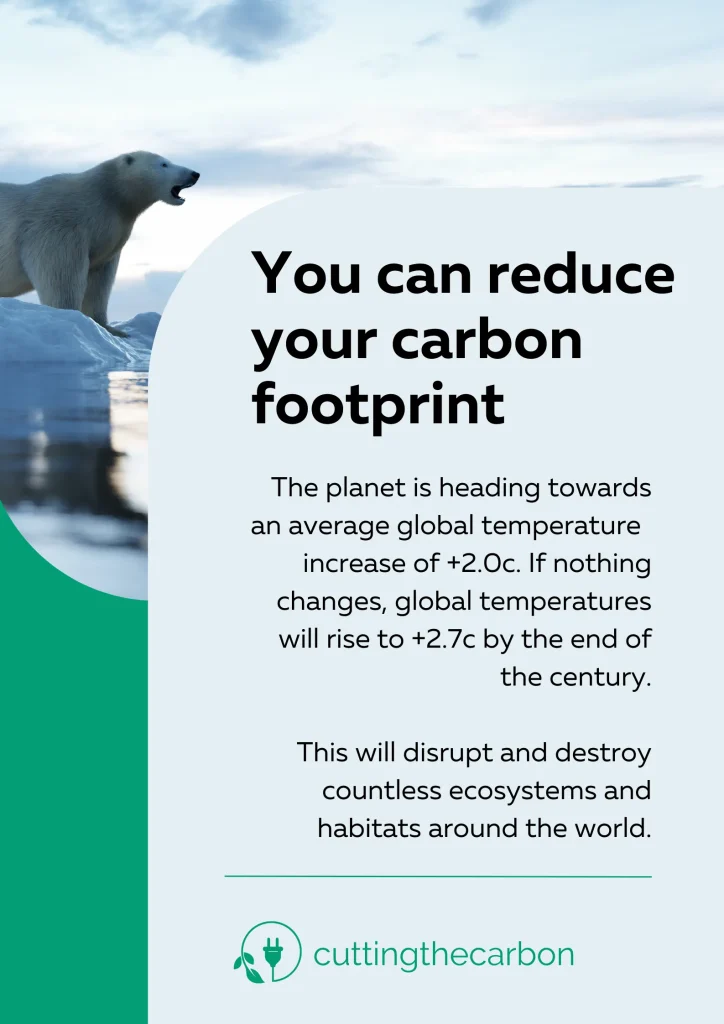
The Paris Climate Agreement
The Paris Agreement, a legally binding international treaty on climate change, was adopted by 196 Parties at the UN Climate Change Conference (COP21) in Paris, France, on 12 December 2015 and came into effect on 4 November 2016.
The primary goal of the Paris Agreement is to limit the increase in the global average temperature to well below 2°C above pre-industrial levels and to pursue efforts to limit the temperature increase to 1.5°C above pre-industrial levels.
The Paris Agreement is unique because it is the first time a binding agreement has brought all nations together to combat climate change and adapt to its effects. It requires economic and social transformation based on the best available science.
The Paris Agreement works on a five-year cycle of increasingly ambitious climate action carried out by countries. Since 2020, countries have been submitting their national climate action plans, known as nationally determined contributions (NDCs). Each successive NDC reflects an increasingly higher degree of ambition compared to the previous version.
In their NDCs, countries communicate actions they will take to reduce their greenhouse gas emissions to reach the goals of the Paris Agreement.
Countries also communicate in their NDCs actions they will take to build resilience to adapt to the impacts of climate change. The Paris Agreement also provides a framework for financial, technical, and capacity-building support to those countries who need it.
The Paris Agreement reaffirms that developed countries should take the lead in providing financial assistance to less endowed and more vulnerable countries while encouraging voluntary contributions by other Parties.
The Paris Agreement also establishes a technology framework to provide overarching guidance to the well-functioning Technology Mechanism, accelerating technology development and transfer through its policy and implementation arms.

With the Paris Agreement, countries established an enhanced transparency framework (ETF). Under ETF, starting in 2024, countries will report transparently on actions taken and progress in climate change mitigation, adaptation measures, and support provided or received.
The information gathered through the ETF will feed into the Global stocktake, which will assess the collective progress towards the long-term climate goals.
Although climate change action needs to be massively increased to achieve the goals of the Paris Agreement, the years since its entry into force have already sparked low-carbon solutions and new markets.
More and more countries, regions, cities, and companies are establishing carbon neutrality targets. Zero-carbon solutions are becoming competitive across economic sectors representing 25% of emissions.
This trend is most noticeable in the power and transport sectors and has created many new business opportunities for early movers. By 2030, zero-carbon solutions could be competitive in sectors representing over 70% of global emissions.
The WWF Carbon Footprint Calculator Report
The WWF-UK Footprint Calculator Report analyses data from WWF-UK’s Environmental Footprint Calculator from February 2019 to June 2022. It encourages individuals to measure their impact and reduce their environmental footprint. The data is presented in a series of figures, each representing a different aspect of environmental footprint.
The analysis was conducted on over a million user responses to the WWF Carbon Footprint Calculator.
There is an exploration of the total carbon footprint of users and the carbon footprints associated with different aspects of consumption, including food, travel, home, and personal consumables, referred to as ‘Stuff’. The ‘Stuff’ component of the calculator allows a wide range of footprints to be achieved by users, indicating a broad range of consumption habits.
The data reveals some individuals have relatively ‘extreme’ material consumption habits.
The image below shows the average total carbon emissions, measured in metric tonnes of CO2 equivalent (tCO2e) for each postcode area based on responses to the WWF Footprint Calculator, which were calculated for the timeframe from February 2019 through June 2022.
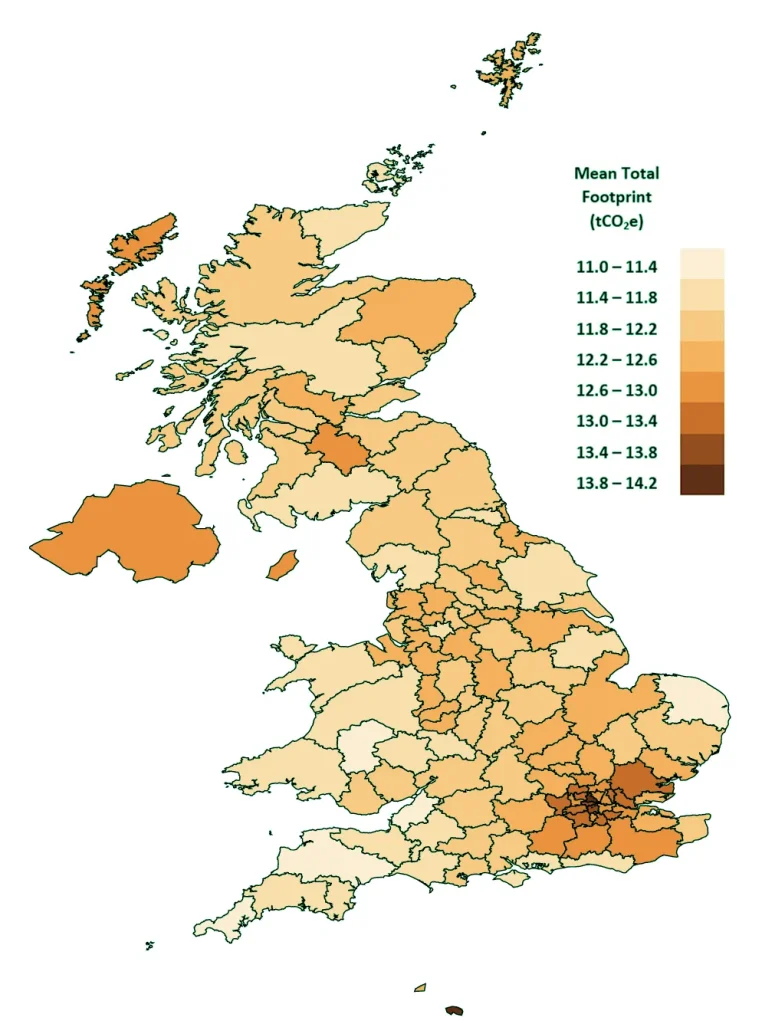
In terms of energy-saving measures, the report presents a time series of the percentage of respondents who reported having an energy-saving measure in their house. This includes energy-saving light bulbs and loft insulation. It also presents data on the percentage of respondents who reported having low-flow fittings to taps and showers in their homes and those who reported having solar panels.
Furthermore, it presents data on spending habits related to environmental footprint. This includes data on the percentage of respondents who reported spending on a TV, laptop or PC, a large item of furniture, a mobile phone or tablet in the last 12 months.
The analysis also uses postcode data to examine user data from a spatial perspective, identifying areas of the UK that demonstrate higher or lower uptake of environmentally friendly behaviours. This spatial analysis can help identify areas that could be targeted for improvement in reducing their environmental footprint.
Temporal information is also used to reveal trends in the footprint and lifestyle-linked data, as well as the effect of the COVID-19 restrictions on individuals’ carbon footprints. This temporal analysis provides insights into how environmental footprints have changed over time and in response to specific events.
In conclusion, this highly detailed report provides a comprehensive analysis of the environmental footprints of UK citizens, offering valuable insights into consumption habits, the popularity of environmentally friendly behaviours, and trends over time.
Summary
Carbon footprint calculators play an important role in helping individuals and businesses understand and reduce their greenhouse gas emissions.
We can significantly reduce our carbon footprint by exploring the different types of calculators, understanding the various greenhouse gas emissions and their sources, and implementing strategies such as renewable energy, energy efficiency, and sustainable travel options.
Frequently Asked Questions
How is a carbon footprint calculated UK?
By taking into account your daily activities, like commuting and energy use, as well as any other carbon-emitting sources, you can calculate your carbon footprint in the UK.
This is done by multiplying the data collected with an emission factor to quantify greenhouse gas emissions accurately. A summary of all the emissions then gives an estimation of your total carbon footprint.
What is 1 tonne of CO2 equivalent to in the UK?
One tonne of CO2 is the equivalent of running a petrol car such as a Peugeot 107, Volkswagen Up or Citroen C1 for 5,737 miles (or 9,234 km), which is roughly 85% of the annual average mileage in the United Kingdom. This equates to driving around 6,800 miles per year.
What is the average CO2 footprint in the UK?
On average, each UK resident produces 12.7 tonnes of CO2 annually, making the UK’s collective carbon footprint immense.
What is the purpose of carbon footprint calculators?
Carbon footprint calculators allow us to take an accurate inventory of our emissions and thus empower us to reduce our environmental impact. By helping us to identify the areas where we can make changes, these calculators can be a powerful tool for change.
How many trees does it take to offset 1 ton of CO2?
To offset 1 ton of CO2, it’s estimated that around 15 to 20 trees need to be planted. However, this number can vary depending on the type of tree and its lifespan. It’s important to note that trees must be properly cared for and allowed to mature to sequester carbon effectively.
What has the biggest carbon footprint in the UK?
The largest contributor to greenhouse gas emissions in 2022 was consumer expenditure, accounting for 27% of all UK GHG emissions. The sectors of electricity, gas, steam and air conditioning supply, manufacturing, and transport also significantly contribute to emissions, collectively accounting for 72% of emissions. Despite a 6% increase from 2021, the 2022 emissions are still below 2020 levels.
Research Resources:
- https://www.gov.uk/government/statistics/uks-carbon-footprint
- https://www.carbonindependent.org/23.html
- https://eciu.net/insights/2021/why-the-uks-1-of-global-emissions-is-a-big-deal
- https://www.ons.gov.uk/economy/environmentalaccounts/articles/comparinggreenhousegasemissionsukandeuropeancountries/2020
- https://assets.publishing.service.gov.uk/government/uploads/system/uploads/attachment_data/file/1147372/2022_Provisional_emissions_statistics_report.pdf
